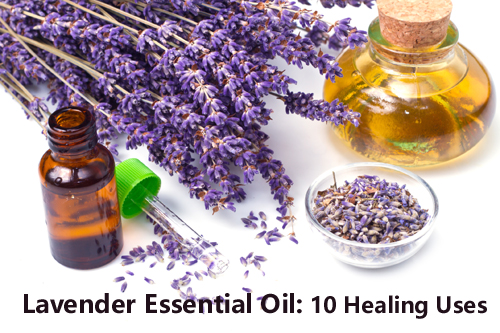The genus Lavandula comes from the Latin word lavare meaning “to wash,” and L. angustifolia, known as true or common lavender, is the species used medicinally. Lavender essential oil is steam-distilled from fresh flowers and is mainly produced in Bulgaria and France. Be sure to use a reputable supplier when purchasing lavender essential oil as it is one of the most commonly adulterated essential oils. A genuine and authentic essential oil should always list the botanical name, the part of the plant used, the country of origin and the method of extraction. The synthetic scent of lavender from fragrance oil is not the same as a pure essential oil – there are no health benefits from synthetic fragrance oils!
When I refer to “neat” application, this means applying a drop of lavender essential oil directly on the skin. While this is generally recognized as safe, instances of sensitization have occurred. Furthermore, it is not recommended to use other essential oils in this fashion, with the exception of tea tree. When I talk about using lavender in a carrier oil, this means diluting a few drops of the essential oil in a base oil. Different oils can be used for different purposes, but with this article focusing on first aid remedies, extra virgin olive oil is a great and convenient choice. As there are approximately 600 drops in one ounce, use six to eighteen drops of pure lavender essential oil per ounce (by volume) of carrier oil for a one to three percent dilution.
Here we go, my top ten healing uses for lavender essential oil:
Bruises
Lavender is great for bruises because it is anti-inflammatory and analgesic which aids in the healing process while decreasing pain. Using lavender in a carrier oil, gently massage into bruised area. For best results, dilute lavender in arnica-infused oil. Arnica contains sesquiterpene lactones and polysacharides that stimulate phagocytosis, thus cleaning up debris and reducing healing time. Please note that arnica should not be applied to broken skin.
Muscle Aches and Menstrual Cramps
Massage lavender diluted in a carrier oil (arnica-infused oil for additional relief) into painful area or, my favorite, add a few drops of lavender essential oil to a warm Epsom salt bath for a deep muscle soak.
Bug Bites and Bee Stings
Lavender’s antiseptic, anti-inflammatory, and healing properties make it a great choice for bites and stings as it reduces infection, swelling, and itching. To use, simply apply one drop of lavender essential oil neat to affected area.
Earaches
There are two effective ways to ease the pain of an earache with lavender. The first is to gently massage lavender in a carrier oil into the outer ear and back of the ear. The second method is to put a drop of lavender on a cotton ball and gently place it on the outer ear. Never put it directly in the ear canal.
Depression
Lavender is a restorative herb and is classified as a nervine, meaning that it has a calming effect on the mind and body. It works in powerful ways to bring feelings of comfort and peace and also helps with fatigue. Suggestions include inhaling lavender essential oil directly from a vial, spritzing your room with lavender diluted in distilled water, and infusing your space with lavender from a candle or incense. The options are endless.
Headaches
Lavender’s sedative effects make it a great remedy for headaches, especially when the headaches are caused by stress. Massage a drop of lavender diluted in a carrier oil into the temples and back of the neck, followed by a few deep, relaxing breaths of lavender essential oil directly from a vial. Add peppermint essential oil to the mix for even better headache relief.
Sanitizer
Lavender was used in hospitals during World War I to disinfect floors and walls. Use lavender essential oil in a soap to cleanse, in water and vinegar for household cleaning, or try it in a base of grain alcohol as a hand sanitizer.
Insomnia
Lavender works particularly well if insomnia is due to a restless and anxious mind. Before bed, spray your pillow and face with lavender diluted in distilled water, take a few deep breaths, inhaling lavender directly from the vial or from a drop on a tissue, or place dried lavender buds in a sachet in your pillow case.
Burns and Sunburns
It was the French chemist, Rene-Maurice Gattefosse, who is famously cited for treating his severe burns and resulting infection with lavender essential oil. Apply a drop of lavender essential oil neat to minor burns. For sunburns, spray your body with lavender diluted in distilled water. Please seek medical attention for severe burns.
And my number one healing use for lavender – Stress
Lavender has balancing and harmonizing effects on the autonomic nervous system. In panic attack situations, inhale lavender essential oil directly from the vial and seek medical attention if necessary. For general stress and anxiety, spritz your face and room with lavender diluted in distilled water, take a relaxing bath with a few drops of lavender diluted in sea salt, or enjoy a massage using lavender-infused oil.
That is all for now. And if you see David Letterman, let him know that he is free to use this for his next Top Ten List.
The Author:
